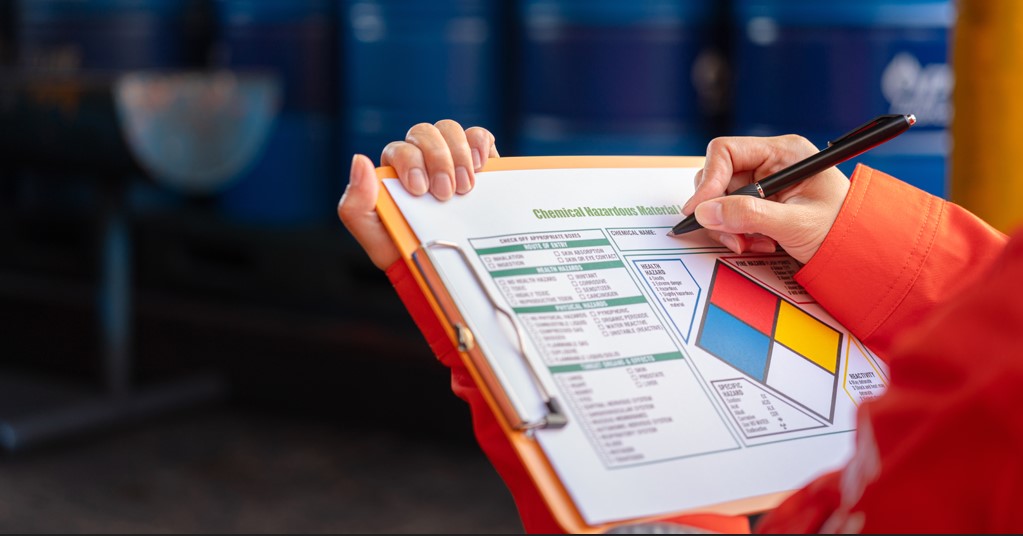
The Risk of Chemical Burns in the Workplace

Chemicals that are alkaline or acidic can be especially harsh or corrosive. Bodily contact with these chemicals can damage tissues, such as the skin or eyes. Because the damage is similar to that caused by exposure to high heat, such an injury is called a chemical burn. Due to the dangerous chemicals present at many industrial worksites, chemical burns are a common hazard. Employers and managers have a responsibility to prevent injuries of this nature.
Occupations That Pose a Significant Risk
Most chemical injuries in the workplace affect the skin and eyes, usually because a corrosive material spilled onto the skin or splashed into a worker’s face. In the latter case, the worker may accidentally swallow some of the material, which can cause injuries to the internal organs. Internal organs can also suffer damage if a worker inhales chemical fumes.
Here are a few occupations in which workers are at high risk for chemical burns.
- Factory Workers
The manufacture of many consumer goods involves harsh or corrosive chemicals. Predictably, those who work in plants that specifically manufacture chemicals are at particular risk for injuries from accidentally coming in contact with these chemicals. - Automotive Mechanics
Battery acid is a highly corrosive chemical. Mechanics who work on motor vehicles may encounter it when changing the battery or while working in the engine compartment. Gasoline on the skin or other tissues also can cause a chemical burn. - Construction Workers
Many products used in the construction of new buildings and infrastructure can cause chemical injuries. Specific examples include paint thinners and concrete mix, the latter because it contains cement.
Symptoms of Chemical Burns
In some cases, the effects of a corrosive substance on body tissues are evident immediately. In other cases, the symptoms may emerge gradually. This is a potentially dangerous situation because the affected worker may not remember the incident, let alone what the substance was.
Symptoms of a chemical burn may vary depending on the type of substance, how long it remained in contact and the area of the body affected.
For example, chemical injury to the skin can cause it to change color. It can be red due to irritation, but it can also appear white or black. Blisters may form at the site of contact and the skin may appear cracked or start to peel. There may be burning pain or, if the substance has damaged several layers of skin, there may be no sensation at all. The body’s inflammatory response could cause swelling.
A chemical burn of the eyes could cause redness, watering and stinging pain. The injury could result in vision changes, such as blurring or, if the injury is severe enough, blindness.
Inhaling or accidentally ingesting a corrosive substance could cause vomiting, shortness of breath, hoarseness, cough or chest pain. The esophagus and stomach could become perforated and the worker could develop low blood pressure.
Severity of a Chemical Burn
As with other burn injuries, some chemical burns to the skin are superficial, affecting only the outermost layer. Others can penetrate deeper. Superficial injuries are the least serious, partial-thickness burns are moderately serious and full-thickness burns are severe.
Because the symptoms of a chemical injury do not always show up right away, the best practice is to consider any exposure to a corrosive substance as an emergency that should receive immediate medical attention, even if the injury appears superficial. In addition to the depth of the burn, which may be difficult for non-medical personnel to ascertain, there are other signs indicating that a chemical injury to the skin is particularly severe:
- The worker exhibits symptoms of hypovolemic shock, such as shallow breathing, clammy skin or weak pulse.
- The affected area of the skin has a diameter of at least 3 inches.
- The affected area of skin completely encircles a leg or an arm or completely covers the face, feet, groin, buttocks or hands.
If any of these signs are present, immediate medical attention is critical.
First Aid for a Chemical Burn
First aid for a chemical injury can help minimize damage and stabilize the situation before emergency medical personnel arrive. Appropriate first aid steps vary depending on whether the burn affects the skin, eyes or internal organs.
First Aid for Skin Burns
The first step is for the worker to remove any clothing or jewelry that the chemical has touched. Contaminated clothing can bring the substance back in contact with the skin and cause more damage. If any portion of a dry chemical substance remains on the skin, put on gloves and brush it off with the hands.
Rinse the affected area with water for at least 20 minutes, preferably under a shower, taking care to protect eyes or other unaffected parts of the body from contaminated runoff. Repeated rinses are appropriate as long as a burning sensation persists.
A clean bandage should cover the burn loosely to avoid applying pressure. Burned skin is delicate and, if swelling occurs, a bandage that is too tight can cut off blood flow to the area.
First Aid for a Eye Burns
If the corrosive material splashes into the eyes, remove contact lenses, if present, and rinse the eyes. Some worksites are required to have an eyewash station especially for this purpose. Otherwise, rinse the eyes in a shower or sink. Removing contact lenses prevents them from trapping chemicals next to the eye.
First Aid for Accidental Ingestion of a Corrosive Substance
An accidentally ingested chemical may burn the esophagus or stomach on the way down. Do not induce vomiting as it could cause more internal burns. Instead, have the worker drink lots of water to dilute the chemical in the stomach. Hopefully, this will lessen the effects and prevent further internal damage.
Prevention of Any Chemical Burn
Managers should train workers about chemical safety, including the use of personal protective equipment, and provide emergency showers or eyewash stations in case a chemical burn does occur. It is the management’s responsibility to store chemicals safely with signs or labels advising workers of the danger.

